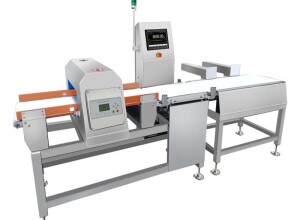A 32-bit 33 MHz PCI interface is provided via PMC P11 and P12 connectors. The digital I/O signals and analog output signals are accessible via a Mini D Ribbon (MDR68) type front I/O connector.
For each individual D/A channel, following output ranges are configurable:
- 0V to 5V Voltage Range
- 0V to 10V Voltage Range
- ±5V Voltage Range
- ±10V Voltage Range
- 4mA to 20mA Current Range
- 0mA to 20mA Current Range
- 0mA to 24mA Current Range
The TPMC542 provides a D/A Sequencer unit for periodic simultaneous digital to analog conversions at a configurable conversion rate. In sequencer mode, the D/A conversion data is fetched from buffers in host memory by PCI master DMA transfer and is temporarily stored in an on-board data buffer. The Sequencer provides a Frame Mode used for repetitive frames of simultaneous D/A conversions on a frame trigger signal event.
If the card is operating as a master card in a Multi-Board configuration the conversion clock (conversion rate) and frame trigger signals may be generated on-board for internal use and may also be driven out on P14 rear I/O. If the card is operating as a target card in a Multi-Board configuration the conversion clock (conversion rate) and frame trigger signals may be sourced externally via the P14 rear I/O interface as well.
Each TPMC542 is factory calibrated. The correction data is stored in an on-board serial EEPROM unique to each PMC module. These correction values may be used to perform a hardware correction for every D/A channel and output range.
The digital I/O lines are ESD protected. Each digital I/O line has a dedicated line transmitter with individual output enable control and a dedicated line receiver. The line receivers are always enabled, so the digital I/O line level can always be monitored. Each digital I/O line input is capable of generating an interrupt triggered on rising edge, falling edge or both.
Additionally, a debounce filter can be configured to eliminate bouncing on the digital I/O inputs. Each digital I/O line has a 4.7kOhm pull resistor to a common reference. The common pull resistor reference is programmable by software (one setting for all digital I/O lines) to +3.3V, +5V or GND.
The module offers an operating temperature range of -40°C to +85°C. All TEWS TECHNOLOGIES products feature a five-year warranty.
Extensive software support for major operating systems such as Windows, Linux, VxWorks, Integrity and QNX is available.





























Interested? Submit your enquiry using the form below:
Only available for registered users. Sign In to your account or register here.